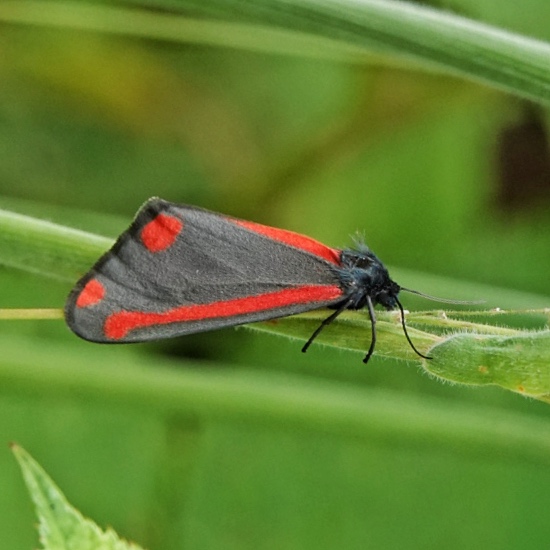
These beautiful moths in the family Erebidae are not native to our continent. Instead they were imported as biocontrol for the toxic Eurasian invasive plant tansy ragwort (Jacobaea vulgaris). They were first introduced in the Pacific Northwest in the 60s to control the burgeoning tansy ragwort population, and, while they have not eliminated that species, they have helped to reduce the population and slow its spread. But because of commerce tansy ragwort continues to spread, and in 1997 the Forest Service introduced Tyria jacobaeae in parts of Montana where wildfires had eliminated competition and allowed tansy ragwort to flourish. This project has been a great success at reducing those populations to primarily 1st year rosettes.
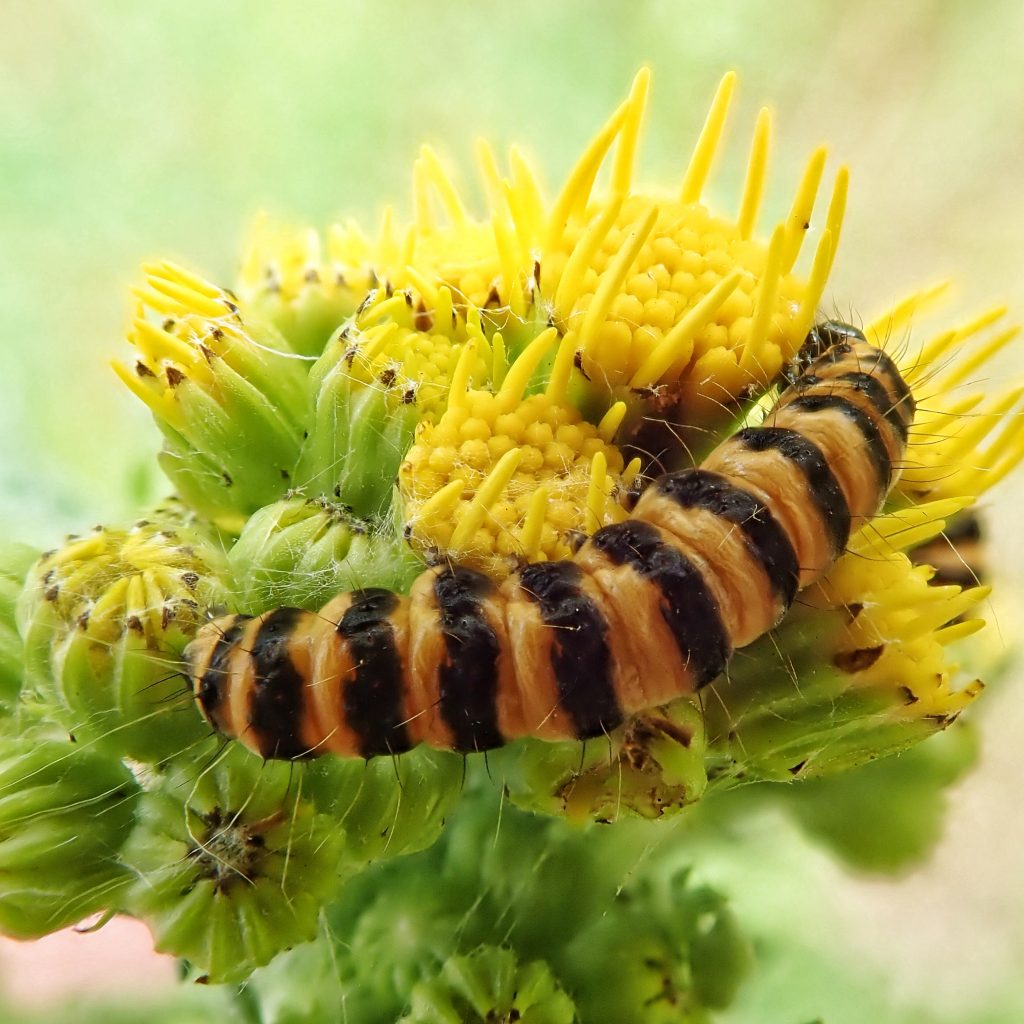
Much of the effectiveness of Cinnabar Moths at controlling tansy ragwort is due to the combination of the damage they inflict on the leaves of the plant when first hatched, which can drastically reduce the plant’s ability to photosynthesize, and then, when the flowers bloom, their switch to feeding on them and thus severely limiting the plant’s ability to set seed and produce a new generation. Unfortunately their success in some areas has depleted the available tansy to the point where larvae have been found on other plants, most notably the natives Senecio triangularis and Packera pseudarea, so that introduction of new populations of Tyria jacobaeae is no longer advised by some agencies. However the close monitoring of the Montana introduction showed very little collateral damage to native plants, even when the population of tansy ragwort plummeted, because the Cinnabar Moth population also drastically declined.

An interesting side note is that I had always previously assumed that the patterning of the caterpillars was aposematic (warning colors), due to the toxins they ingest from the tansy. However when I was searching for the larvae on tansy ragwort, to get photos for this profile, I was often fooled by the sight of the thin rays of the yellow flowers against a dark backdrop, and realized that the yellow and black striations may also conversely provide some level of camouflage.
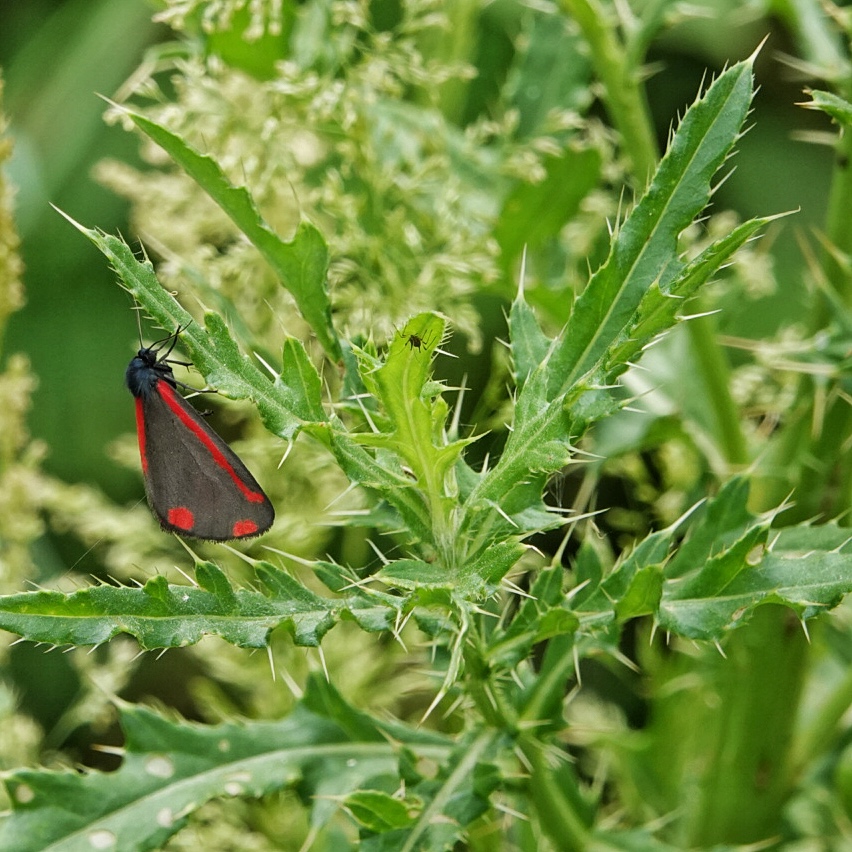
Description-Larvae are yellow with black bands; adults are medium sized (fw length 16-21mm), dark grey moths with a bright red band along the forward and aft margins of the forewing, two red dots near the apical margin, and a black line along the apical margin; the hindwing is red and the body and head are black.
Similar species– There is nothing similar in our region.
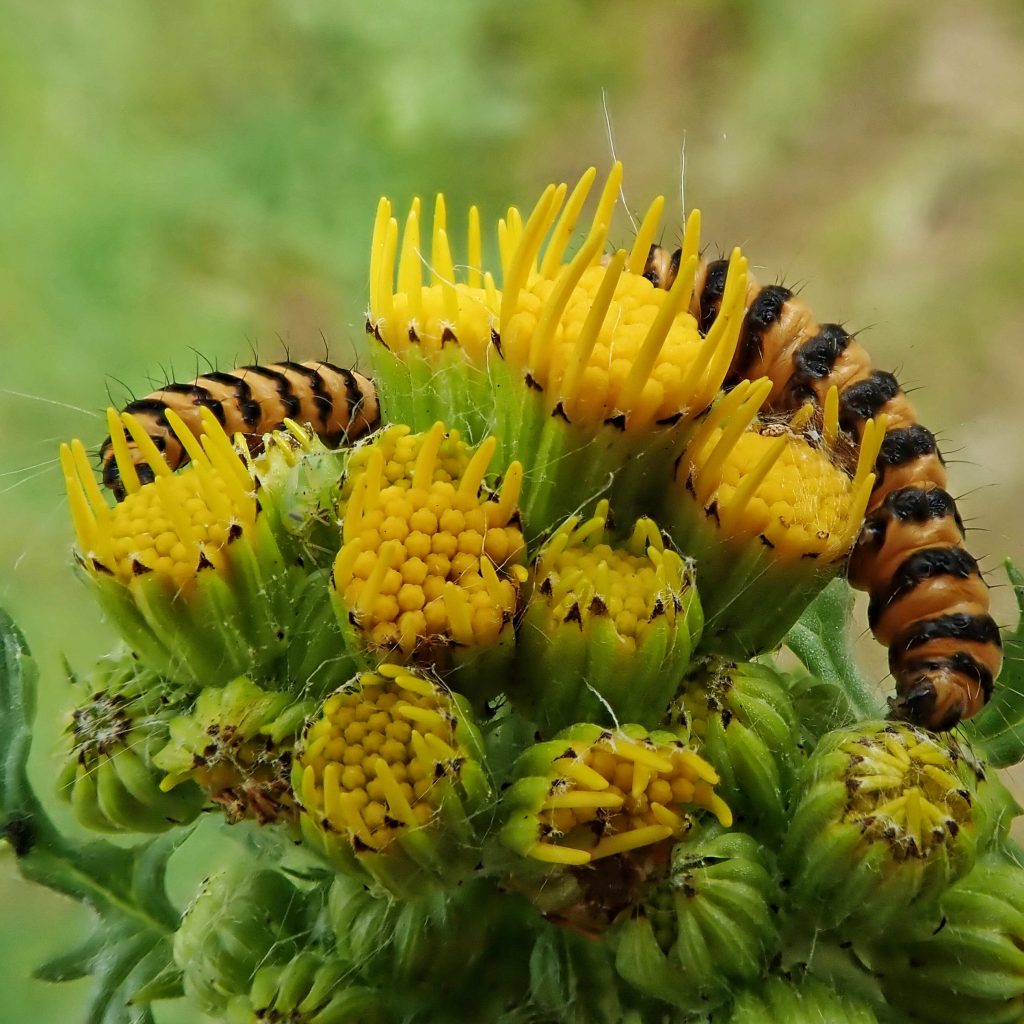
Habitat-Grasslands, meadows and other open areas up to subalpine elevations.
Range-Native to Eurasia, introduced in North America as a biocontrol; in our region it is found west of the Cascades.
Eats-Larva feed almost exclusively on Jacobaeae vulgaris, but have been found on Senicio triangularis and Packera pseudarea; they feed on the leaves until the flowers bloom, and then switch to consuming them.
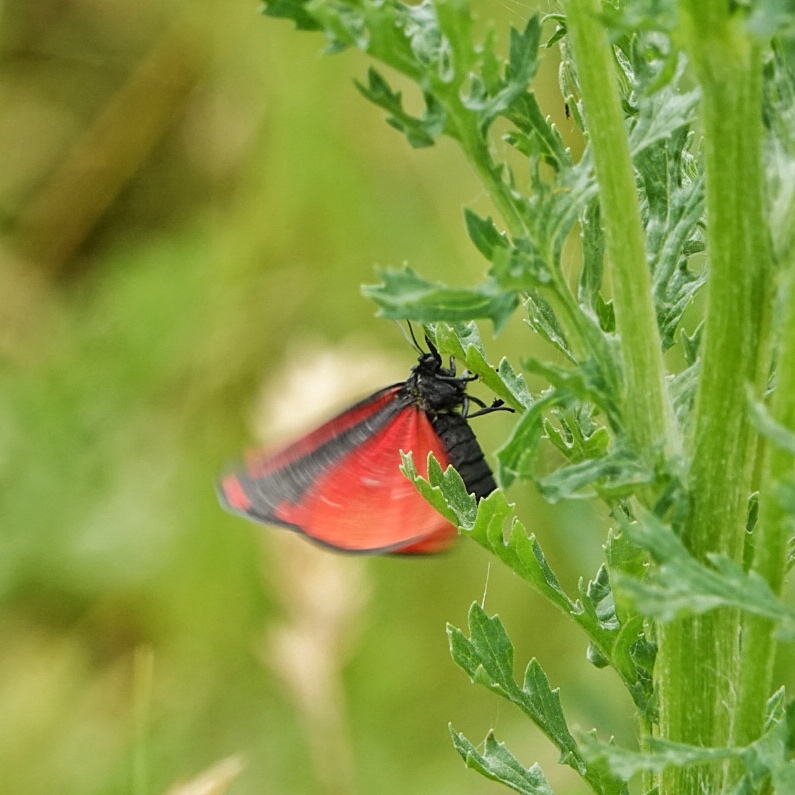
Eaten by-Not many vertebrates twice, because of the presence of various toxic pyrrolizadine alkaloids from larval ingestion of tansy ragwort; larvae are parasitized by braconid wasps in the genus Apanteles, the chalcidoid wasps Coelopisthia extenta, Conomorium patulum, Dibrachys microgastri, Psychophagus omnivorus, Brachymeria minuta, and B. tibialis, and the ichneumon wasps Vulgichneumon subcyaneus, and Mesochorus discitergus; the larvae are also prey for carpenter ants.
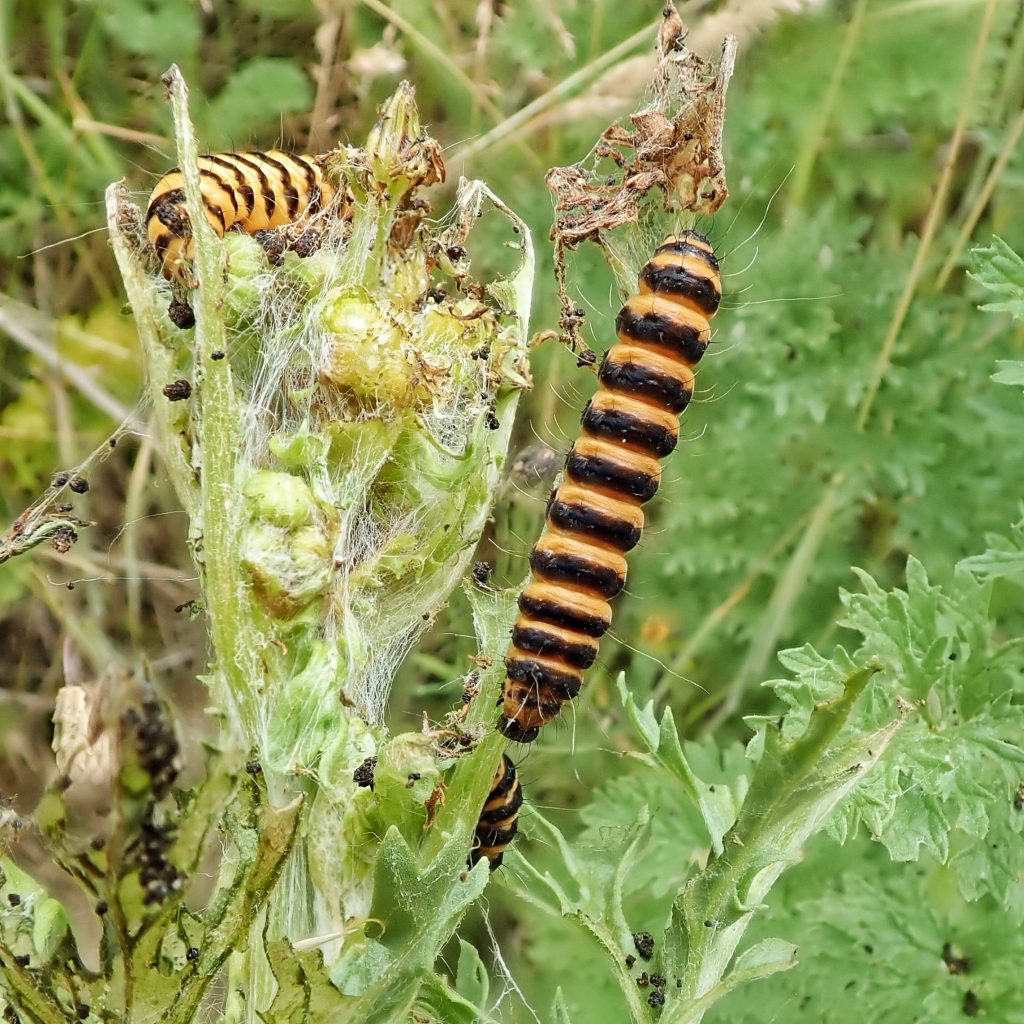
Reproduction-Univoltine in our region; eggs are laid on the underside of the host plant’s leaves;
Adults active-May through July
Etymology of names–Tyria is pseudo-Greek for the city of Tyre in Lebanon, which, besides being one of the oldest continually occupied cities in the world (established c2750 BCE), was renowned for its purple dyes. The specific epithet jacobaeae references it’s primary host plant Jacobaea vulgaris (tansy ragwort).
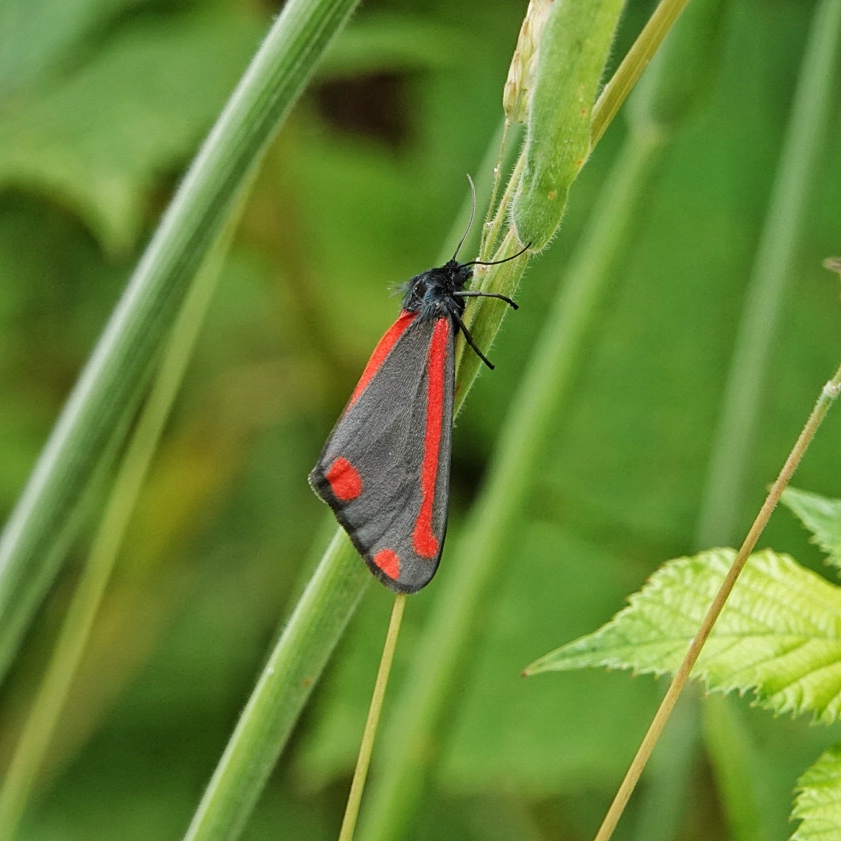
https://bugguide.net/node/view/3823
http://invasives.wsu.edu/biological/tyriajacobaeae.htm
http://mothphotographersgroup.msstate.edu/species.php?hodges=8113
https://www.fs.fed.us/rm/pubs_journals/2000/rmrs_2000_markin_g001.pdf
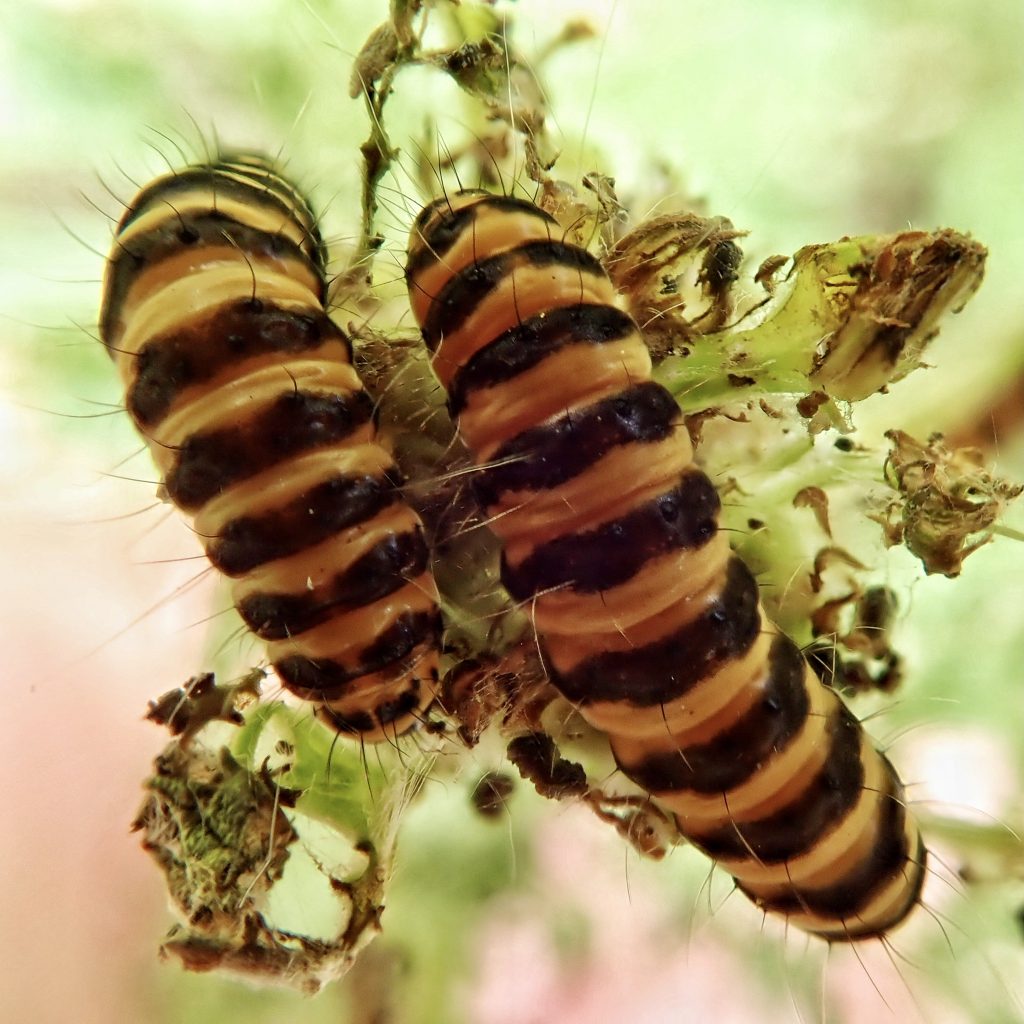
I found these for the 1st time in Bremerton 2019.
Cool! Hard to get good photos. They don’t hold still!